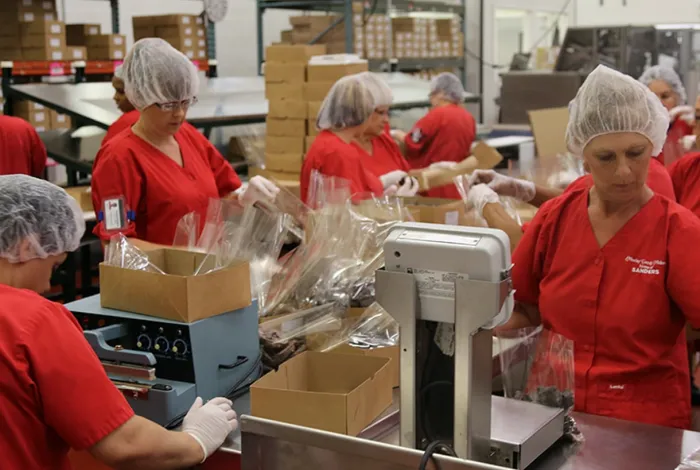

Now Available!
Get your copy of the 7th Annual State of Smart Manufacturing and hear from 300+ manufacturers in this new survey report!
Subscribe to Our Blog
For a monthly digest of expert insights, data points, and tips like the ones in this article.

It’s time for more manufacturers to question what being demand-driven really means by looking at their businesses the way their customers do.
Having accurate forecasting processes, a finely-tuned sales and operations process (S&OP) or being great at new product development and introductions isn’t enough. These are all great attributes, but they must be synchronized into a cohesive strategy if a manufacturer is going to become demand-driven.
Demand-Driven Is a Mindset, Not a Mantra
Like customer-centricity, demand-driven has become one of the latest mantras you can hear CEOs repeating in their CNBC interviews.
Don’t get me wrong, it’s great that they value their customers – but precious few have done the hard work of orchestrating demand, supply and product networks so that they consistently deliver above customer expectations.
Few have also worked to alleviate the inevitable scheduling differences across demand and supply networks, while synchronizing with their internal product networks.
Keeping all three networks tightly integrated, orchestrated and synchronized – and exceeding customer expectations – is what being demand-driven is all about.
As we’ve covered in past blog posts, cloud computing-based platforms can help break down the silos that keep these three critical systems isolated at manufacturing enterprises.
Being Demand-Driven Pays
When a manufacturer successfully orchestrates demand, supply and product networks well, costs and time-to-market go down while sales and customer satisfaction increase.
A recent study by Gartner found that manufacturers with exceptional demand-driven strategies in place operated with 15 percent less inventory, saw perfect order fulfillment increases of 17 percent or more, and have 35 percent shorter cash-to-cash cycles.
According to the Boston Consulting Group study The Demand-Driven Supply Chain: Making It Work and Delivering Results (published in May 2012), manufacturers who have more efficient demand-driven supply chains reduce order fulfillment cycles by days and, in some cases, weeks.
Five Strategies for Becoming Demand-Driven
One of the most visible signs of manufacturers excelling at being demand-driven is that they are continually exceeding customer expectations.
They also are always looking for ways to streamline how their demand management, supply chain and product development organizations collaborate. Their cultures reverberate with trust and openness.
Using cloud-based ERP systems, they are able to share data, insights and manufacturing intelligence corporate-wide, in realtime, further breaking down silos.
Here are five strategies for the journey to becoming demand-driven:
- Define key performance indicators (KPIs) and metrics of suppliers’ performance from the customer perspective. The best demand-driven manufacturers are passionate about an outside-in approach to evaluating their performance. Far from drinking their own Kool-Aid, they seek to find ways to continually improve. Many are using cloud-based platforms for analytics and reporting to create real-time visibility of supplier quality levels, on-time performance and profitability.
- Expand transaction-based systems to include customer-specific data so every interaction gets measured based on their requirements and expectations. This is where many manufacturers fall short of being demand-driven as they allow their silo-ed ERP systems to define how they interact with customers. Forward-thinking manufacturers are turning to cloud-based ERP systems and applications to turn transactions into a new foundation of relationships and trust with customers.
- Understand that supply chains exist to serve customers, not manufacturing companies.It is a common practice to have subsidiary suppliers for each market segment. Manufacturers furthest along on their demand-driven journey see suppliers as an integral part of the customer experience they are delivering.
- Reduce time-to-market and open up entirely new markets by being quicker to respond to market requirements. General Electric, Lenovo, Lockheed Martin and many other high-tech demand-driven manufacturers have cut down their time-to-market and are opening up new markets through better orchestration with their supplier partners. In these companies, demand-driven supply chains are a foundation for creating entirely new products and entering completely new markets.
- Give everyone a chance to excel as part of the demand-driven manufacturing team, and turn change management into a competitive advantage. The manufacturers spoken to in these studies say that getting people to change is far and away the biggest challenge of all to becoming demand-driven. Giving everyone a chance to “own” the outcome of becoming demand-driven, especially the impact on customers, is key. When this is done well, internal systems give employees the information they need and entire company cultures change and become more customer-centric.
Bottom line: The highest-performing manufacturers are able to translate demand-driven manufacturing into reduced inventory, stronger perfect order fulfillment and faster cash-to-cash cycles while increasing customer satisfaction.

